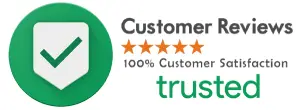H1 header tag
A Complete Guide to Optimizing H1 header tag for SEO
Abstract
As an essential component of on-page SEO, the H1 header tag plays a vital role in website optimization. When used correctly, this tag can improve your website's visibility, boost your search engine rankings, and increase your website's traffic. In this article, we'll take a closer look at the H1 header tag, its importance for on-page SEO, and how you can optimize it to improve your website's search engine rankings.
What is the H1 header tag?
Within the BODY element, the HTML header tag "H1" looks like this:
<h1>Your web page's highest header</h1>
It is the first text on the webpage that you can view and contains the most significant text. It displays the precise subject of the webpage and is similar to the page's title.
There can only be one H1 tag per page. The H1 element has the highest priority for SEO and search engines when it comes to text.
The H1 header tag identifies the main heading of a webpage. It's typically the most prominent heading on a webpage and is used to describe the overall content of the page. Search engines use the H1 tag to understand the main topic and content of the page and rank it accordingly in search engine results pages (SERPs).
Importance of the H1 Header Tag for On-page SEO
One of the most significant benefits of using the H1 header tag is its impact on on-page SEO. By optimizing the H1 tag, you can signal to search engines that your page is relevant to a particular keyword or topic. This, in turn, can improve your website's search engine rankings and visibility.
Optimizing the H1 Header Tag for SEO
To optimize your H1 header tag for SEO, you should follow a few best practices:
1. Use Only One H1 Tag per Page: While there's no strict rule on how many H1 tags you can use on a page, it's best practice to have only one H1 tag per page. The H1 tag should accurately reflect the main topic of the page.
2. Include Keywords in the H1 Tag: Including your target keyword in the H1 tag can help search engines understand the primary topic of your page. However, avoid stuffing the H1 tag with keywords, as this can lead to keyword stuffing, which can harm your website's search engine rankings.
3. Make the H1 Tag Descriptive: The H1 tag should accurately describe the content of the page. It should be easy to read and provide a clear idea of what the page is about. Avoid using generic or vague headings that don't accurately describe the page's content.
Examples of Bad and Good H1 Header Tag
Bad: "Welcome to our website"
Good: "Affordable Web Design Services for Small Businesses"
In the bad example, the H1 tag doesn't provide any indication of what the website or the page is about. In contrast, a good example is specific and descriptive, making it easier for search engines and users to understand the page's content.
Conclusion
The H1 header tag is a crucial element of on-page SEO that can significantly impact your website's search engine rankings and visibility. By following best practices for optimizing the H1 tag, you can improve your website's relevance to search engines and improve your overall search engine rankings. Remember to use only one H1 tag per page, include relevant keywords, and make the tag descriptive and accurate. With a well-optimized H1 tag, you can boost your website's traffic and improve your online presence.
